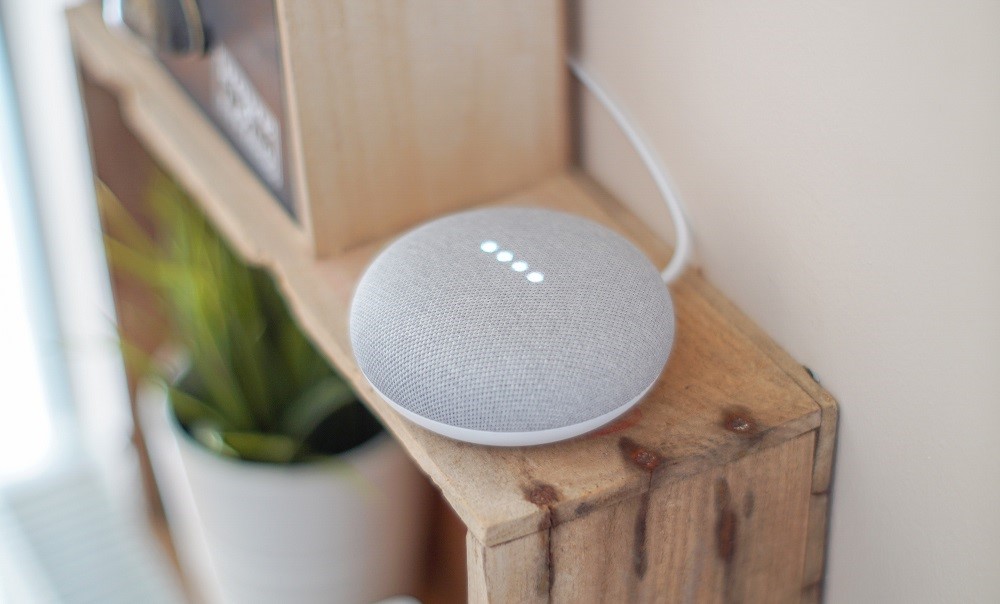Why do retailers "overhear" their employees and why else use audio technologies
Walmart, the world's largest trading network, received a patent for a new technology for collecting audio data called Listening to the Frontend. The solution is based on a system of sensors in the cash zone, which record noises and sound signals, as well as conversations between customers and employees. Why does it need Walmart, we will tell further.

Photo by Richard Monteverde CC
It is known that the Walmart system will record conversations between customers and cashiers and analyze them using speech recognition technologies. From the description of the patent, it can be concluded that, based on the audio data, “employee performance indicators” will be calculated to assess how well they cope with their responsibilities (for example, the system will check whether the teller has greeted the buyer). According to the company's estimates, in the long term this should help reduce the cost of servicing the store and "increase customer satisfaction."
')
The patent describes other scenarios for the use of the new system. For example, by the sound it can determine how far buyers are from the cashier. This will help to calculate how much time the employee needs to maintain the queue, and maintain the optimal number of open cash registers in the store.
At the same time, the system is able to distinguish not only voices, but also other sounds - for example, the “beeps” of scanners and the rustling of packets. So the system will be able to determine whether the cashier has put all the goods in packages to the buyer.
Many retailers analyze the turnover and the number of customers passing through one cash register in order to draw up a sales plan and evaluate sellers. However, some industry experts are worried that the new Walmart audio recording and speech recognition technology can trigger personal data leaks.
Ifeoma Ajunwa, an associate professor at the School of Labor Relations at Cornell University, argues that Walmart has the right to use the technology to record employee conversations. In the USA, where about 40% of chain stores are located, the General Data Protection Regulations (GDPR) do not apply. Therefore, the company does not even have to warn employees about the introduction of new technology.
Ifeoma has fears that Walmart will begin to punish the cashiers for too long conversations with customers or not a friendly greeting. Earlier, Walmart has already filed complaints about the processing of employees. New technology can also play a role in tightening working conditions and lead to an invasion of workers' privacy.
At the same time, it is important that the result from the implementation of the employee monitoring system can be directly opposite to the desired one. On this account even conducted research. As Harvard professor Ethan Bernstein (Ethan Bernstein) noted in his research work , observing subordinates can reduce their productivity.

Pexels PD Photos
“Listening to the Frontend” is not the first time Walmart is going to experiment with speech recognition. Last year, the retailer launched a shopping service using the Google Assistant virtual assistant. This allows you to make orders by voice through the “smart” speaker of Google Home and receive goods through the Google Express service.
Customer voice recognition can also be used for security purposes. This year, a large British online store, Shop Direct, has implemented speech recognition technology in a call center. It creates a special “audio print”, analyzing almost one and a half thousand distinctive features of the caller. Using these prints, the system can detect fraudsters and devote more time and resources to real buyers who called the store’s contact center.
One of Walmart's competitors in the retail world - Amazon - this year also received a patent for a new technology for monitoring. Amazon offered a system for warehouse workers, which includes a special bracelet and ultrasonic emitters, “placed” across the warehouse. With the help of the bracelet, you can track the location of the employee in the room and the movement of his hands in real time. The bracelet starts to vibrate if a person tries to get from the shelf not the item that is registered in the order being executed.
Audio recording technology in stores is not a new phenomenon. More than 20 years ago, The New York Times published an article about hidden microphones in hundreds of establishments across America. Retailers supplemented their surveillance systems with them to prevent theft and keep track of how employees serve customers.
In 1994, one of the businessmen told the publication that he had to abandon the microphones in his establishment, because the recording did not work out whether it was one or another voice — an employee or a client. Since then, the recording quality has improved, plus speech recognition technology has become "smarter." However, it is not yet known how effective the Walmart system will be in this context.
Additional reading - in our blog "Hi-Fi World":

Photo by Richard Monteverde CC
Why walmart
It is known that the Walmart system will record conversations between customers and cashiers and analyze them using speech recognition technologies. From the description of the patent, it can be concluded that, based on the audio data, “employee performance indicators” will be calculated to assess how well they cope with their responsibilities (for example, the system will check whether the teller has greeted the buyer). According to the company's estimates, in the long term this should help reduce the cost of servicing the store and "increase customer satisfaction."
')
The patent describes other scenarios for the use of the new system. For example, by the sound it can determine how far buyers are from the cashier. This will help to calculate how much time the employee needs to maintain the queue, and maintain the optimal number of open cash registers in the store.
At the same time, the system is able to distinguish not only voices, but also other sounds - for example, the “beeps” of scanners and the rustling of packets. So the system will be able to determine whether the cashier has put all the goods in packages to the buyer.
What's wrong here
Many retailers analyze the turnover and the number of customers passing through one cash register in order to draw up a sales plan and evaluate sellers. However, some industry experts are worried that the new Walmart audio recording and speech recognition technology can trigger personal data leaks.
Ifeoma Ajunwa, an associate professor at the School of Labor Relations at Cornell University, argues that Walmart has the right to use the technology to record employee conversations. In the USA, where about 40% of chain stores are located, the General Data Protection Regulations (GDPR) do not apply. Therefore, the company does not even have to warn employees about the introduction of new technology.
Ifeoma has fears that Walmart will begin to punish the cashiers for too long conversations with customers or not a friendly greeting. Earlier, Walmart has already filed complaints about the processing of employees. New technology can also play a role in tightening working conditions and lead to an invasion of workers' privacy.
At the same time, it is important that the result from the implementation of the employee monitoring system can be directly opposite to the desired one. On this account even conducted research. As Harvard professor Ethan Bernstein (Ethan Bernstein) noted in his research work , observing subordinates can reduce their productivity.

Pexels PD Photos
How else are audio technologies used in retail
“Listening to the Frontend” is not the first time Walmart is going to experiment with speech recognition. Last year, the retailer launched a shopping service using the Google Assistant virtual assistant. This allows you to make orders by voice through the “smart” speaker of Google Home and receive goods through the Google Express service.
Customer voice recognition can also be used for security purposes. This year, a large British online store, Shop Direct, has implemented speech recognition technology in a call center. It creates a special “audio print”, analyzing almost one and a half thousand distinctive features of the caller. Using these prints, the system can detect fraudsters and devote more time and resources to real buyers who called the store’s contact center.
One of Walmart's competitors in the retail world - Amazon - this year also received a patent for a new technology for monitoring. Amazon offered a system for warehouse workers, which includes a special bracelet and ultrasonic emitters, “placed” across the warehouse. With the help of the bracelet, you can track the location of the employee in the room and the movement of his hands in real time. The bracelet starts to vibrate if a person tries to get from the shelf not the item that is registered in the order being executed.
Audio recording technology in stores is not a new phenomenon. More than 20 years ago, The New York Times published an article about hidden microphones in hundreds of establishments across America. Retailers supplemented their surveillance systems with them to prevent theft and keep track of how employees serve customers.
In 1994, one of the businessmen told the publication that he had to abandon the microphones in his establishment, because the recording did not work out whether it was one or another voice — an employee or a client. Since then, the recording quality has improved, plus speech recognition technology has become "smarter." However, it is not yet known how effective the Walmart system will be in this context.
Additional reading - in our blog "Hi-Fi World":
- “Sound in the Museum” - contemporary art and creative experiments
- Word for human speech: what it can do
- How to count the sound from a pack of chips, or what is a "visual microphone"
- The power of sound: what tasks it solves in games
- "Eight Beats": about sounds in old games
Source: https://habr.com/ru/post/418523/
All Articles